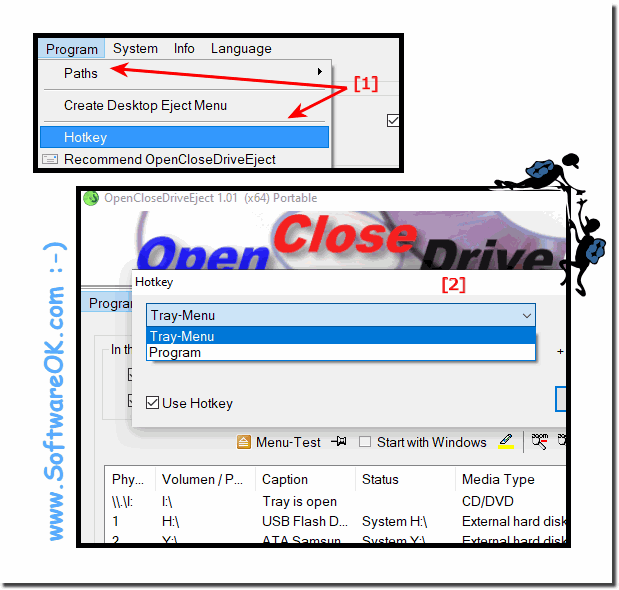
To prevent this, include the word ON in Options. Note: If the label or function is specified but the hotkey is disabled from a previous use of this command, the hotkey will remain disabled. This is useful to change only the hotkey's Options. This parameter can be left blank if KeyName already exists as a hotkey, in which case its label will not be changed. Hotkeys can also be defined as functions without the Hotkey command. When the hotkey executes, the function is called without parameters. Other expressions which return objects are currently unsupported. For example, Hotkey #z, %FuncObj%, On or Hotkey #z, % FuncObj, On. : If not a valid label name, this parameter can be the name of a function, or a single variable reference containing a function object.

%VarContainingLabelName%), IsLabel(VarContainingLabelName) may be called beforehand to verify that the label exists. The trailing colon(s) should not be included. Both normal labels and hotkey/ hotstring labels can be used, but if the script contains multiple labels with the same name, only the first can be used. The name of the label whose contents will be executed (as a new thread) when the hotkey is pressed. Prior to, the prefix was ignored when modifying an existing hotkey variant. This prefix affects all variants of the hotkey and cannot be removed. : The use hook ($) prefix can be added to existing hotkeys. However, prior to, the hotkey was not updated if Label was omitted. : If the hotkey variant already exists, its behavior is updated according to whether KeyName includes or excludes the tilde (~) prefix. This name is shared by all variants of the hotkey, and does not change even if the Hotkey command later accesses the hotkey with a different symbol ordering. When a hotkey is first created - either by the Hotkey command or a double-colon label in the script - its key name and the ordering of its modifier symbols becomes the permanent name of that hotkey as reflected by A_ThisHotkey. GetKeyName() can be used to retrieve the standard spelling of a key name. Also, the order of modifier symbols such as ^!+# does not matter. Esc is not the same as Escape for this purpose). However, the names of keys must be spelled the same as in the existing hotkey (e.g. When specifying an existing hotkey, KeyName is not case sensitive. a double-colon label), which will cause that hotkey to be updated with the values of the command's other parameters. KeyName can also be the name of an existing hotkey label (i.e. If KeyName already exists as a hotkey, that hotkey will be updated with the values of the command's other parameters. For example, specify #c for the Win+ C hotkey. Name of the hotkey's activation key, including any modifier symbols. Hotkey, KeyName, Label, Options Hotkey, IfWinActive/Exist, WinTitle, WinText Hotkey, If, Expression Hotkey, If, % FunctionObject

This unique feature allows users to catch their mistakes before putting together their model for real.Hotkey - Syntax & Usage | AutoHotkey HotkeyĬreates, modifies, enables, or disables a hotkey while the script is running. Users will find this under the animation and analysis tab along with plenty of information regarding their simulations. There are multiple 2D system analysis tools that people can use to locate any error floors that might be present in their model. With an impressive amount of functionality, it is easy to see why this program has become so popular. Anything from the standard designs to the most unusual of shapes can be modeled using the modeling and design tab in this program. The program offers an unparalleled array of design and modeling tools that users might find helpful. QCAD is an easy to use but powerful 2D CAD system for everyone. QCAD was designed with modularity, extensibility and portability in mind.
#QCAD DEFINE HOT KEYS CODE#
The source code of QCAD is released under the GPL version 3 (GPLv3), a popular Open Source license. With QCAD, create technical drawings such as plans for buildings, interiors, mechanical parts or schematics and diagrams. QCAD can be extended through a C++ plugin interface as well as through its very powerful and complete scripting interface (ECMAScript / JavaScript). Its core is developed in C++, based on the Qt tool kit. Features include layers, blocks (grouping), 35 CAD fonts included, support for TrueType fonts, various Metrical and Imperial units, DXF and DWG input and output. QCAD is an application for computer aided drafting in two dimensions (2D).


 0 kommentar(er)
0 kommentar(er)
